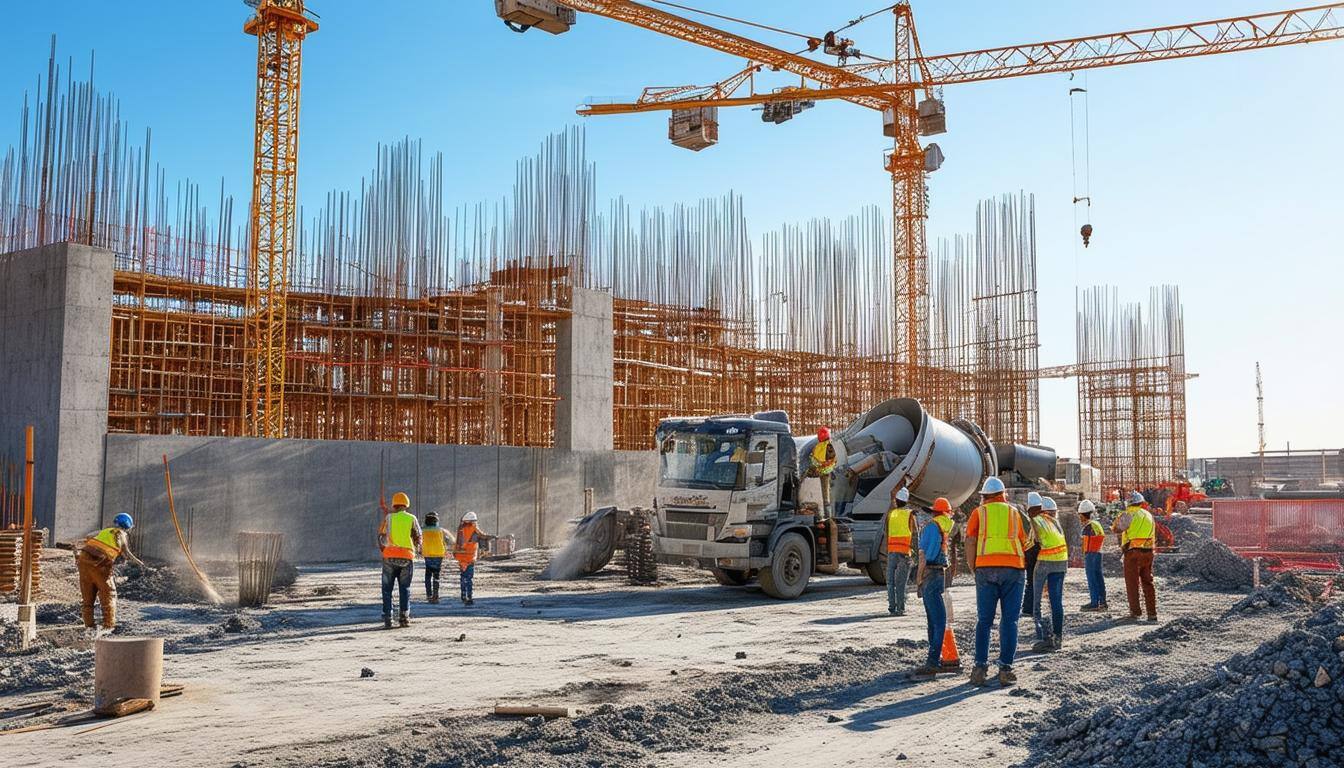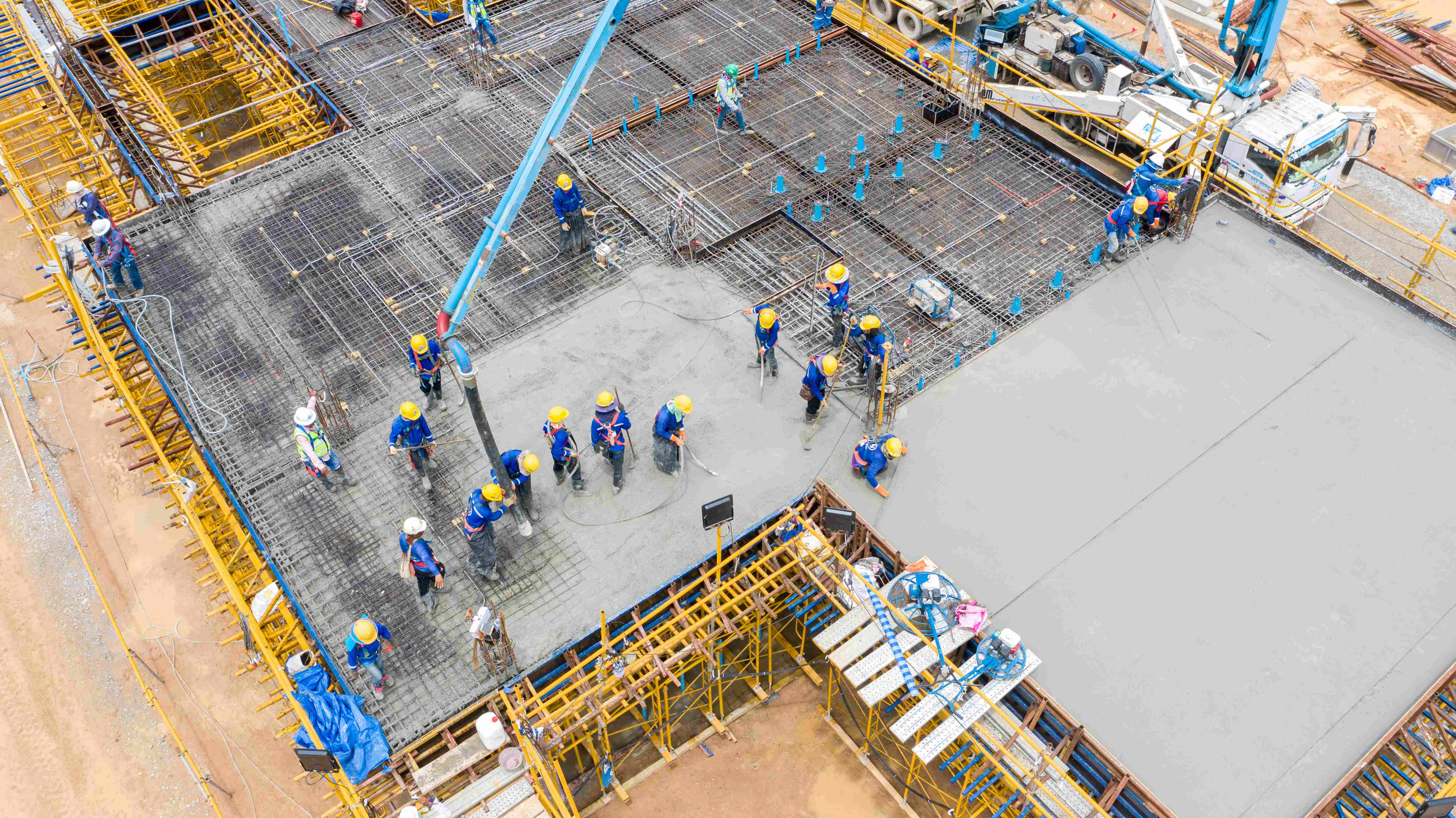Why Concrete Strength Matters in Commercial Building Construction

Concrete is the backbone of modern commercial buildings, providing the structural integrity necessary for safety, durability, and long-term performance. As one of the most widely used construction materials, its strength plays a crucial role in supporting loads, resisting environmental forces, and ensuring the stability of large structures.
Commercial buildings, from high-rise offices to industrial warehouses, require high-strength concrete that can withstand significant pressure, weather conditions, and wear over time. Without proper attention to concrete strength, buildings may face structural failures, costly repairs, and safety hazards.
Understanding why concrete strength matters and how to ensure the right specifications for each project is essential for architects, engineers, and contractors.
Understanding Concrete Strength in Construction
Concrete strength is measured primarily by its compressive strength, which determines how much pressure it can withstand before failing. Strength is typically measured in pounds per square inch (psi), with commercial-grade concrete ranging from 3,000 psi for standard projects to over 10,000 psi for high-performance applications.
The required strength of concrete depends on the type of structure being built. For example, a parking garage or bridge deck must support heavy loads, requiring higher-strength concrete than a single-story office building. Engineers calculate these strength requirements based on factors such as load-bearing capacity, environmental exposure, and expected wear and tear.
Compressive strength is influenced by the concrete mix design, curing process, and environmental conditions during construction. Using the correct proportions of cement, water, and aggregates, along with reinforcement techniques, ensures that the final structure can support its intended use.
The Impact of Concrete Strength on Structural Integrity
The durability and safety of commercial buildings depend on the strength of their concrete. Weak or improperly mixed concrete can lead to cracks, settlement issues, and even structural failures. Ensuring proper concrete strength helps maintain long-term stability, reducing the need for costly maintenance and repairs.
Concrete strength directly impacts the foundation, columns, beams, and slabs of a building. Foundations, in particular, require high-strength concrete to prevent settling or shifting over time. If the foundation is not strong enough to support the building’s weight, cracks can develop, leading to significant structural concerns.
Reinforced concrete structures, such as skyscrapers and large commercial complexes, rely on high-strength materials to distribute loads evenly. Without sufficient compressive strength, the building’s ability to withstand environmental forces like wind, earthquakes, and temperature fluctuations is compromised.
Factors That Influence Concrete Strength
Several factors determine the strength of concrete used in commercial construction, including material composition, water-cement ratio, curing process, and testing methods.
Material composition is one of the most critical aspects of concrete strength. The quality and type of cement, aggregates, and admixtures affect the final product’s performance. High-quality cement mixed with well-graded aggregates and minimal impurities results in stronger, more durable concrete.
The water-cement ratio plays a significant role in determining compressive strength. Excess water in the mix weakens the concrete by creating larger pores, reducing its ability to bear loads. Maintaining the right balance ensures a dense, solid structure that can support heavy use.
Proper curing is essential for achieving maximum strength. Curing allows the concrete to hydrate and develop its full strength potential over time. If concrete dries too quickly, cracks and weak spots can form, compromising its durability. Ideal curing conditions include maintaining moisture levels and preventing extreme temperature fluctuations.
Testing concrete strength ensures that it meets project specifications and industry standards. Engineers and contractors can find reliable testing procedures by learning more at https://deslinc.com/blog/choosing-best-concrete-strength-test and similar resources to ensure that their projects meet structural and safety requirements. Various testing methods, including compression tests, flexural tests, and non-destructive testing, help verify strength and identify potential weaknesses before construction continues.
Common Problems Caused by Weak Concrete
Using concrete with insufficient strength can lead to several issues that compromise a building’s integrity and safety. Cracking is one of the most visible problems, occurring when concrete lacks the necessary compressive strength to withstand structural stress. Cracks can lead to water infiltration, corrosion of reinforcement materials, and reduced stability over time.
Settlement occurs when concrete foundations or slabs fail to support the building’s weight, leading to uneven floors, shifting walls, and structural instability. This problem often arises when soil conditions are not properly evaluated or when low-strength concrete is used in load-bearing areas.
Spalling is another issue caused by weak concrete. This occurs when the surface layer of concrete deteriorates and flakes off, exposing internal reinforcement and making the structure vulnerable to further damage. Spalling is particularly problematic in parking structures and bridges, where heavy use and environmental exposure accelerate wear.
In extreme cases, low-strength concrete can contribute to structural failure, leading to significant safety risks. Buildings with compromised concrete may require expensive retrofits or complete demolition if the damage is severe.
How to Ensure Proper Concrete Strength in Commercial Projects
Achieving the right concrete strength in commercial construction requires careful planning, quality materials, and adherence to best practices in mixing, curing, and testing.
Conducting a thorough site analysis before construction begins helps determine the appropriate concrete mix for the project. Soil conditions, load requirements, and environmental factors all influence the necessary strength levels. Engineers use this information to specify the right mix of proportions and reinforcement techniques.
Using high-quality materials and adhering to proper mix designs is essential for strong, durable concrete. Working with reputable suppliers ensures that cement, aggregates, and admixtures meet industry standards. Avoiding excess water in the mix prevents weakening and enhances overall strength.
Proper placement and curing techniques help maximize concrete strength. During pouring, ensuring even distribution and eliminating air pockets reduces the risk of weak points. Curing should be carefully managed to maintain moisture levels and prevent rapid drying, allowing the concrete to reach its full strength potential.
Regular strength testing throughout the construction process ensures compliance with structural requirements. Compression tests, slump tests, and core sampling verify that the concrete meets design specifications. Addressing any discrepancies early prevents costly repairs and ensures project success.
The Future of High-Strength Concrete in Commercial Construction
Advancements in concrete technology are leading to stronger, more durable materials that enhance commercial construction. High-performance concrete (HPC), self-healing concrete, and fiber-reinforced concrete offer improved strength, longevity, and resistance to environmental factors.
HPC incorporates specialized admixtures and fine aggregates to achieve superior compressive strength and durability. It is commonly used in skyscrapers, bridges, and heavy-duty structures that require exceptional performance.
Self-healing concrete contains bacteria or microcapsules that release healing agents when cracks form. This innovative technology extends the lifespan of concrete structures by automatically repairing minor damage before it becomes a major issue.
Concrete strength is one of the most critical factors in commercial construction, affecting durability, safety, and performance. Ensuring that the right materials, mix designs, and testing procedures are used throughout the construction process minimizes risks and maximizes structural integrity. By understanding the importance of concrete strength and taking proactive measures to maintain quality, construction professionals can build with confidence, creating structures that last for generations.
Related Posts
Join the movement.
Your Entourage journey starts here. Join Australia's largest community of over 500,000 business owners and entrepreneurs, and receive instant access to exclusive content and updates delivered straight to your inbox.



